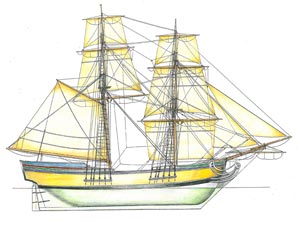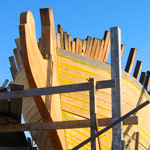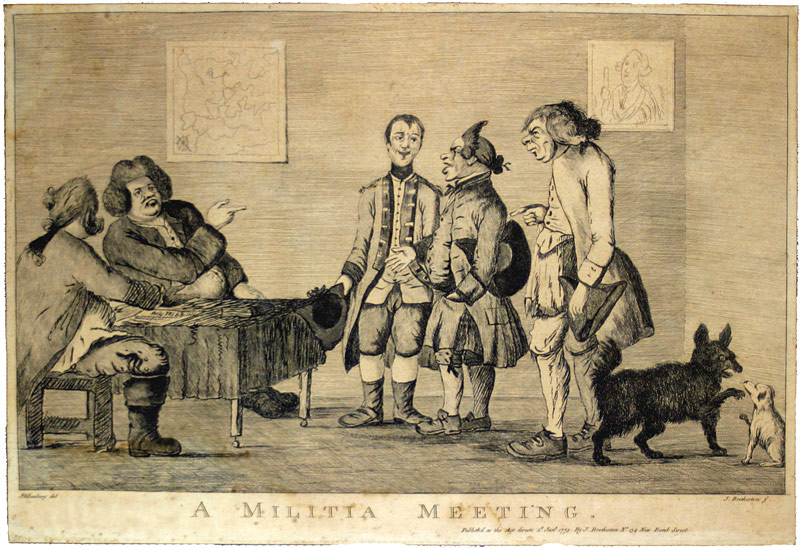The Beaver
The original brig Beaver, like the Dartmouth, was built and owned by the Rotch’s, an affluent Nantucket Quaker family. The Beaver was a whaling vessel built in 1772 by Ichabod Thomas at the Brick Kiln Yard on the banks of the North River near Situate, Massachusetts. Similar to other merchant vessels of the time, the Beaver was about 85 feet long with a beam of nearly 24 feet. The draft of the Beaver could not exceed nine feet because Nantucket Harbor had a sand bar across its mouth, which as a result, set the maximum size for vessels of that port. The patriarch of the Rotch family dynasty was Joseph Rotch who was born in Salisbury, England on May 6, 1704, and later immigrated to the American colonies. Joseph Rotch was a shoemaker by trade and moved from Salem, Massachusetts to Nantucket Island in 1725. It was on Nantucket where Joseph Rotch became a Quaker, put shoemaking aside and became involved in the island’s foremost industry – whaling. Joseph Rotch had a reputation for being a fair and honest businessman; additionally, he was a leader in his church. Joseph Rotch had three sons, all born on Nantucket Island: William (b. 1734), Joseph Jr. (b. 1743), and Francis (b. 1750), and he brought them into his business in 1753. On the eve of the American Revolution, the Rotch family along with Aaron Lopez, a prominent Portuguese Jew involved in the whaling industry from Newport, Rhode Island, had a fleet of fifteen vessels engaged in the whaling industry. The Rotch family controlled and handled every aspect of the whaling industry. They owned their own fleet of ships, hired captains and crews, scheduled voyages, did their own accounting, assessed monetary exchange rates, graded whale oil, and determined when the most profitable times were to ship whale oil and bone to markets. At the time of the Boston Tea Party, the headquarters and offices of the Rotch family were a brick counting house established in 1772 by William Rotch located at the foot of Main Street on Nantucket Island. The original building still stands today and is now known as The Pacific Club, a name given by captains of the Pacific whaling fleet in 1854.
Captain Hezekiah Coffin, a Quaker mariner, commanded the Beaver at the time of the Boston Tea Party, and her homeport was the whaling capital of New England, Nantucket Island. The maiden voyage of the Beaver was from Nantucket to London, England to deliver a shipment of whale oil. Both the Beaver and Dartmouth were docked in London after delivering their shipments of whale oil. Both ships were looking for return cargos, when their captains unwittingly agreed to transport the British East India Company tea to Boston. The Beaver, with her cargo of 112 chests of British East India Company tea, arrived at Griffin’s Wharf in Boston on Wednesday, December 15, 1773 – the day before the Boston Tea Party. The Beaver was the last of the three Tea Party Ships to arrive in Boston because she was delayed as a result of a case of smallpox which broke out onboard and was held in quarantine for two weeks in Boston’s outer harbor.





